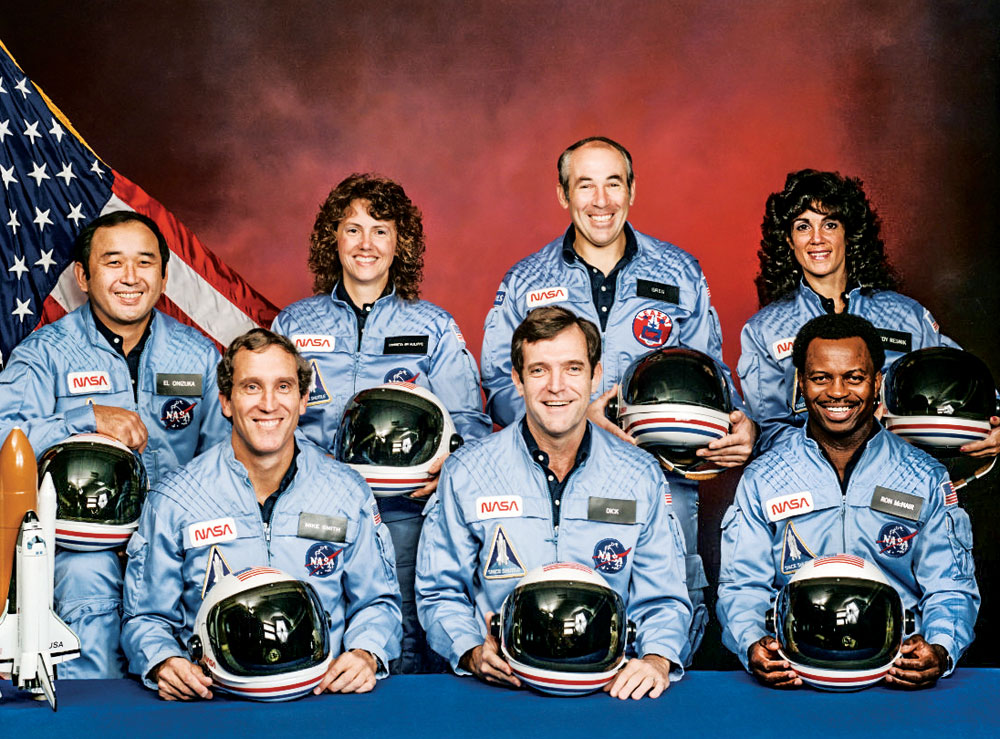 I review one show this month, and what a show it is.
I review one show this month, and what a show it is.
Challenger: The Final Flight (Netflix)

Challenger: The Final Flight
There are a few defining moments throughout history that tend to coalesce a generation around a shared experience, serve as a visceral and temporal marker, and whittle away any sense of innocence we may have left about the world. The bombing of Pearl Harbor and the assassinations of JFK and MLK were such formative events. For the following generation, and for this writer, it was the Challenger explosion. A new documentary series detailing the disaster, as well as the events leading up to and after the explosion, explores the tragedy in personal as well as political terms. Executive Produced by Bad Robot (a J.J. Abrams company) and co-directed by Steve Leckart and Academy Award-winner Daniel Junge (a former Denverite), the show hits all the right notes as we re-live the worst moment of a generation.
 As the series tells us, the space shuttle program was conceived in the 70s as a follow-up to the highly successful and energizing Apollo program for NASA. While Russia beat the Americans to space, the U.S. successfully landed men on the moon and raced far ahead. It was a technological as well as a sociological win for the country in the middle of the Cold War. The U.S. won. But then there was Vietnam, Watergate, the Iran hostage crisis, and a terrible recession throughout the 70s. As one of the Challenger astronauts states in the series, “The U.S. needed something to feel good about.” Enter the space shuttle, billed as the greatest technological feat in history and one that would move NASA forward in giant steps and leaps. It would once again send Americans into space, it was reusable, and it would microwave the burgeoning communication satellite business. It was beautiful to watch.
As the series tells us, the space shuttle program was conceived in the 70s as a follow-up to the highly successful and energizing Apollo program for NASA. While Russia beat the Americans to space, the U.S. successfully landed men on the moon and raced far ahead. It was a technological as well as a sociological win for the country in the middle of the Cold War. The U.S. won. But then there was Vietnam, Watergate, the Iran hostage crisis, and a terrible recession throughout the 70s. As one of the Challenger astronauts states in the series, “The U.S. needed something to feel good about.” Enter the space shuttle, billed as the greatest technological feat in history and one that would move NASA forward in giant steps and leaps. It would once again send Americans into space, it was reusable, and it would microwave the burgeoning communication satellite business. It was beautiful to watch.
The program was rife with problems from the start, however, as the show details. One of the reporters on the NASA beat notes that everyone thought NASA was infallible, and while there have been accidents in the past (the Apollo 1 fire that killed three men, for example), most disasters had been narrowly averted (Apollo 13). They knew that every mission still hung by a thread and there was as much we didn’t know as we did. Yet NASA forged ahead, and they also engaged in a diversity campaign that brought women and people of color into the program. On that fatal flight in 1986, they even added a civilian, New Hampshire teacher Christa McAuliffe, to the crew. The show notes how after six years of missions, the public had lost interest in the program. NASA’s solution: send up a teacher.
We all know how the story ends (ice, O-rings, bad decisions), but the beauty of the show is in the presentation. It creates an ethos through its meticulous background research, it gives us the historical timeline of the shuttle program as well as the Challenger events in particular, and the pathos comes from the personal stories of the people involved. And what stories they are. We all remember McAuliffe, but seven brilliant souls were lost that day. As President Reagan famously said at the time, “They slipped the surly bonds of Earth to touch the face of God.” Leckart and Junge give us a story that protects that legacy and allows us to re-see the events through the protective walls of our personal and collective histories. And yet, even through all that wreckage, the story breaks through.
Vincent Piturro, PhD, is a Professor of Film and Media Studies at Metropolitan State University of Denver. He can be reached at vpiturro@msudenver.edu. And you can follow “Indie Prof” on Facebook and @VincentPiturro on Twitter.


0 Comments